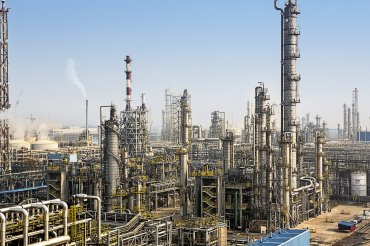
Polyisobutylene demand in Asia-Pacific currently lags behind North America and Europe, but is expected to take a big leap forward in the next decade, according to consultancy Kline & Co. Driven by growing additive demand and production capacity, Asia-Pacific will lead in PIB demand by 2028.
PIBs are mostly used in lubricant additives – which account for over half of PIB demand – and act as dispersants, viscosity index improvers and as anti-mist agents in metalworking fluids.

Photo: BASF/Flickr
BASF-YPC, a 50-50 petrochemical joint venture between BASF and Sinopec, located in Nanjing, China. The site produces polyisobutylenes, which the Asia-Pacific region will lead demand in over all other regions within a decade, according to Kline & Co.
The Asia-Pacific region leads in PIB capacity, with the potential to produce just under 400,000 metric tons per year, yet its production lags behind Europe and North America at around 300,000 t/y.
This is for a few reasons, according to Hareesh Nalam, senior consultant in the energy practice at Kline. First of all, a major portion of the supply in the Asia-Pacific region is from China. PIB producers in China at present are focused on catering to the demand only in China. Hence, they produce only as much PIBs as needed to meet domestic demand, he explained during an online webinar on Feb. 6. Moreover, they are faced with competition from imports from oversea suppliers such as Daelim, which is based in South Korea.
The region also has large production capacity for conventional PIBs, but additive companies are shifting toward highly reactive PIBs, lowering demand for conventional PIB and leaving production facilities with lower usage rates. Highly reactive PIB is a chemical intermediate used in the production of high-performance lubricant and fuel additives, including additives for sludge prevention. It speeds the producing of derivatives like detergents and dispersants used in lubricants.
A new HR-PIB plant operated by BASF in Malaysia is slowly ramping up production, contributing to the lower average usage rates of plants in the region, Nalam added.
Currently, Asia-Pacific trails North America and Europe in global PIB demand, which reached approximately 907,000 metric tons in 2018. North America – which accounts for over one-third of all demand – has a strong additive manufacturing base, which naturally leads to higher PIB demand. While Europe and Asia-Pacific each have strong additive manufacturing bases as well, North America exports larger volumes of PIB to other regions, giving them a higher share of demand.
This will change over the next decade, according to Kline. By 2028, the firm predicts, Asia-Pacific will lead all other regions in PIB demand. Several factors will contribute to this, including faster lubricant demand growth rate in the Asia-Pacific, said Anuj Kumar, who co-presented the webinar with Nalam. There will also be faster demand growth in sealants [which use PIBs], due to the manufacturing of automobiles and several construction projects in the region.
Most importantly, Kumar explained, China will grow as an additive manufacturing base, reducing the regions reliance on imports. Also contributing to Asia-Pacifics leap in demand is the flat lubricant additive demand growth outlook in both North America and Europe.
Global PIB supply totaled just over 1 million metric tons in 2018. Chemical company BASF led all suppliers by capacity, followed by Daelim and Infineum, the three of which made up just over half of all global capacity. TPC Group took fourth, trailed by Lubrizol, Ineos and Chevron Oronite.
Daelim, the leader in PIB capacity in the Asia-Pacific region, operates a plant in South Korea that can produce both conventional and HR-PIBs.